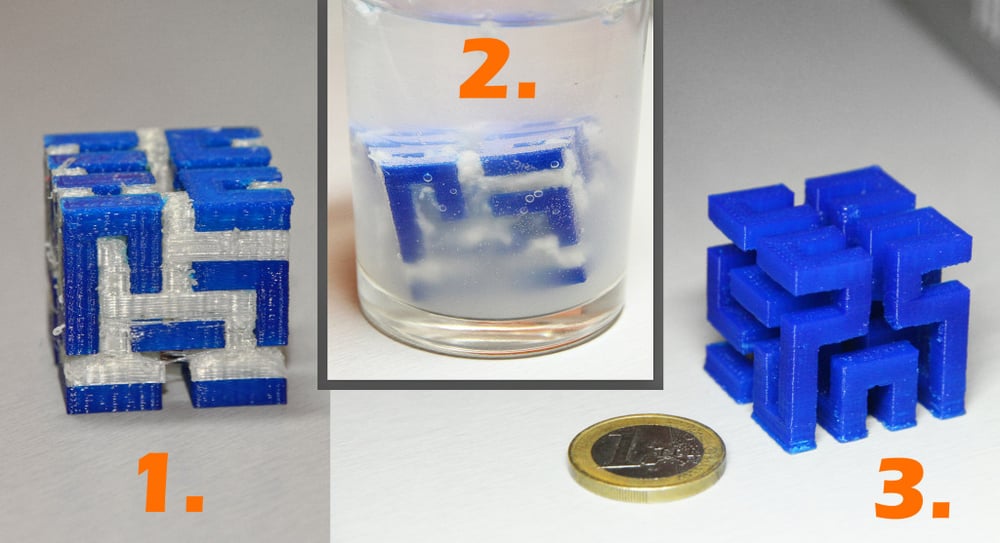Printing materials
3D printing can work with a wide variety of materials. However, some materials like metals or ceramics place very high demands on the printer, which is why plastic is the most commonly used material.
9. Supports
9.3. Types of supports
Grid
Also known as linear support, this is the most common type used in 3D printing. It consists of vertical pillars that touch the overhang throughout its span. This type of support works for almost any overhang and bridge. However, they are more challenging to remove and are more likely to cause surface damage to the model.

Tree
Tree support is a structure that supports the model's overhangs. This type of 3D printing support only touches the overhang at specific points. The advantage of using tree support in 3D printing is that it's easier to remove and doesn't excessively damage the bottom of the overhang. However, it's suitable only for non-flat overhangs, such as the tip of a nose, fingertips, or arches typically found in organic models. It doesn't provide sufficient stability for flat overhangs.

Soluble
If the printer has two extruders, there's a better option available. You can load the main model material into one extruder and a water-soluble material like PVA or a solvent-soluble material like HIPS for support into the other. After printing is done, you can simply dissolve the supports by immersing the model in water. This removal method reduces the risk of damaging the model and makes post-processing easier, making it ideal for complex prints.
